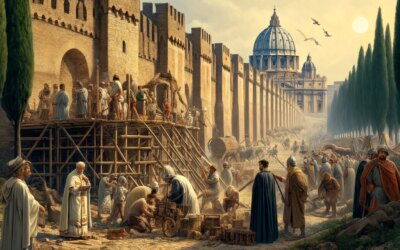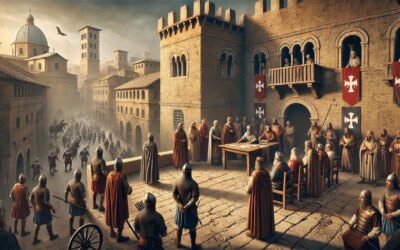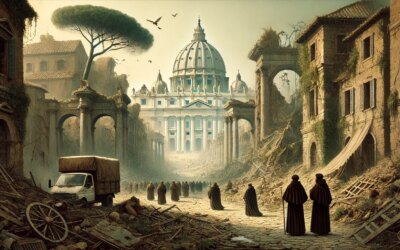Rome in the Shadow of Its Past
By the late 6th and early 7th centuries, Rome was a city in transition. The once-mighty capital of the Roman Empire had suffered invasions, plagues, and economic decline. Yet amid the ruins, a new force emerged to guide the city into the medieval era—the papacy. At the forefront of this transformation stood Pope Gregory I, also known as Gregory the Great.
Pope Gregory I: A Leader in Turbulent Times
Born into an aristocratic Roman family, Gregory had a promising career in administration before turning to monastic life. In 590 CE, he was elected pope, inheriting a city still reeling from the Gothic Wars and the collapse of centralized imperial rule. Gregory took on both spiritual and secular leadership, overseeing the defense of Rome, organizing food distribution, and negotiating with invading Lombards.
The Church as Rome’s New Power
With the Roman Senate nearly obsolete and the empire’s influence waning, the Church under Gregory I became the city’s primary stabilizing force. He restructured ecclesiastical governance, reasserted papal authority, and ensured that the Church played a direct role in aiding the poor and sick.
Preserving Knowledge in a Changing World
One of Gregory’s most lasting contributions was his emphasis on education and the preservation of knowledge. He encouraged monasteries to copy ancient texts, ensuring that classical learning was not entirely lost to time. The Benedictine monastic tradition, which flourished under his guidance, became instrumental in preserving Rome’s intellectual heritage.
Gregory’s Influence on Christianity
Pope Gregory I was also a pivotal figure in shaping medieval Christianity. He reformed liturgical practices, developed Gregorian Chant, and sent missionaries to convert the Anglo-Saxons in Britain, laying the foundation for the spread of Christianity across Western Europe.
The Legacy of Pope Gregory I
By the time of Gregory’s death in 604 CE, Rome had begun its transformation from an imperial capital to a religious center. His leadership set the stage for the papacy’s increasing influence in medieval Europe, ensuring that while the Roman Empire faded, the city’s spiritual and cultural legacy endured.
Rome’s Journey Into the Middle Ages
Pope Gregory I’s reign marked the beginning of a new era for Rome. No longer the administrative heart of an empire, it emerged as the seat of papal power, guiding the course of European history for centuries to come. His efforts in governance, knowledge preservation, and missionary work helped define the medieval world, making him one of the most influential popes in history.






